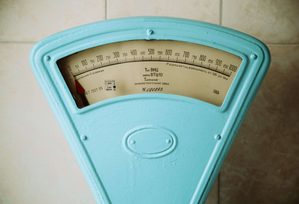How Many Calories Are Burnt Kayaking
In this Guide
Have you ever wanted to get fit without going to the gym and getting extremely sweaty? Water-sports such as kayaking can be a promising, low-impact way to workout. Kayaking can be done in any water body and all you need is a kayak, paddle, and just to be on the safe side, a life jacket. And the best part is that they’re super fun! So what’s better than enjoying a sunny day in the waters, while burning off those calories?
What Muscles Does Kayaking Work on?

Kayaking offers a promising full-body workout:
- It helps in flattening and toning your tummy. Paddling takes a lot of core strength and movement, which not only helps you glide smoothly over water but also burns calories. One hour of paddling burns almost 350 calories alone!
- Water-resistance provides a strengthening workout for your arms, shoulders, chest, and back.
- Steering, guiding, and rotating the kayak strengthens the leg muscles.
- Aerobic exercise is one of the additional benefits of kayaking. It offers complimentary cardio exercise, by elevating the heart rate, decreasing fat, and increasing lean muscle mass. Several sources state that kayaking burns approximately 400-500 calories in just one hour.
- It is less demanding on joints and tissues, making it an effective low-impact workout, thus, allowing those with weak joints to participate actively.
Other Health Benefits of Kayaking:
- It has immense emotional benefits, such as stress relief, lowering blood pressure, and being a mood booster. It also enhances your attention span.
- A recent study by Medicine Science Monitor showed that it improves posture and cognitive performance, especially in the elderly.
- As an outdoor activity, it can be a good source of vitamin D, as 80% of vitamin D comes from the sun’s rays.
- It helps in building confidence and a self-positive image, alongside added brainpower.
Factors Determining the Number of Calories Burnt:
An average healthy human burns approximately 150-300 calories per hour while kayaking. However, the number of calories burnt is dependent upon various factors including the weight of the person kayaking, the weight of the paddle used, the distance traveled, as well as the speed at which you kayak. Terrain and intensity are also determinants for the number of calories burnt.

Weight of the Paddler
It is important to keep in mind that the lesser you weigh, the fewer calories are burnt. So while kayaking, a 125-pound person will burn approximately 300 calories per hour while someone weighing more would burn approximately 400 calories at the same time. 1 hour of kayaking is also equivalent to a 1-mile walk.
Weight of the Kayak
Similarly, the more weight you drag across the water, the more calories you burn. According to reports published in the Harvard Health Publications, within half an hour, using a 125-pound kayak can help burn 150 calories. So, in a heavyweight category, a one-hour long kayaking class with a 200-pound kayak will help you burn approximately 454 calories, whereas, a 175-pound kayak will burn 397 calories.
Material of the Kayak
The material of the kayak is also a lesser-known determinant for the number of calories burnt. 17 feet, 19-pound carbon fiber, or Kevlar Javelin ICF Olympic sprint kayak is less effective than an average sit on top kayak in burning calories. The reason is that the carbon fiber kayak, glides seamlessly without much effort through water, as you don’t need to tug much weight, making it easier to paddle. Therefore, the higher the intensity of kayaking done, the higher the number of are calories burnt.
Type of Water

The type of water also helps in determining the number of calories burnt. Still water bodies, such as lakes, require more paddling and thus burn more calories. Other high-intensity kayaking includes sea kayaking and white-water kayaking. While sea kayaking can be done by an amateur, white-water kayaking is strictly done by professionals as it requires maneuvering through the unpredictable rocky terrain quickly. The adventure sport, surf kayaking is also one of the forms of high-intensity kayaking, burning approximately 500 calories. Ocean kayaking is a relatively less strenuous form of kayaking, but it still requires balance and core strength. As per Harvard Health Publications, kayaking burns calories at an average pace of 4.5 mph; this is the same as that of skateboarding, snorkeling, and softball.
Calories Burnt Surf Kayaking
The adventure sport, surf kayaking is also one of the forms of high-intensity kayaking, burning approximately 500 calories.
Calories Burnt Ocean Kayaking
Ocean kayaking is a relatively less strenuous form of kayaking, but it still requires balance and core strength.
Calories Burnt Sea Kayaking

During sea kayaking, approximately 500 calories are burnt.
As per Harvard Health Publications, kayaking burns calories at an average pace of 4.5 mph; this is the same as that of skateboarding, snorkeling, and softball.
Gender
Moreover, men are more likely to burn more calories than women per hour. An average man burns approximately 431 calories while a woman burns 370 calories in an hour.
In Contrast to other Sports
Canoeing burns 102-450 calories approximately and paddle-boarding burns a maximum of 123 calories. Compared to both of these water-sports, kayaking burns approximately 205 calories, proving that kayaking is a much more effective water-sport.
Calorie Burned Rank and Calorie Burnt Score
In conclusion, 30 minutes of kayaking with moderate conditions burn 215 calories in men and 185 calories for women. The Calorie Burned Score for this is 19.2/100, acquiring a Calorie Burned Rank of 71/100, indicating that moderate kayaking gives a calorie burn of 19.2% of the maximum number of calories that can be burnt and is among the top 71% activities for burning calories. On the other hand, high-intensity kayaking for 30 minutes burns 539 calories for men and 462 calories for women. It has a Calorie Burnt Score of 52.9/100 and a Calorie Burnt Rank of 23/100. This means that 52.9% of calories are burnt during this activity and it is the top 23% of activities for burning calories.
Calories burnt per mile
According to the American Council on Exercise, an average person, weighing 125 lbs burns approximately 283 calories per mile of kayaking. A 150-pound person will burn approximately 358 calories per mile.
In conclusion, 30 minutes of kayaking with moderate conditions burn 215 calories in men and 185 calories for women. The Calorie Burned Score for this is 19.2/100, acquiring a Calorie Burned Rank of 71/100, indicating that moderate kayaking gives a calorie burn of 19.2% of the maximum number of calories that can be burnt and is among the top 71% activities for burning calories. On the other hand, high-intensity kayaking for 30 minutes burns 539 calories for men and 462 calories for women. It has a Calorie Burnt Score of 52.9/100 and a Calorie Burnt Rank of 23/100. This means that 52.9% of calories are burnt during this activity and it is the top 23% of activities for burning calories.
Calculating Calories Burned

Use the following formula to calculate the number of calories burnt while kayaking:
Calories Burnt Per Minute:
Calories burnt/minute = (MET * Body Weight (kg) * 3.5) / 200
Calories Burnt Per Hour:
Calories burnt/hour = (MET * Body Weight (kg) * 60) / 200
MET is a measurement of the energy cost of physical activity for a specific time period. So, a MET of 1 is approximately equal to a person’s energy expenditure from sitting still at room temperature.
Final Words
Therefore, it is safe to say that kayaking is a cost-effective water-sport, which offers a full-body workout coupled with various health benefits. It is the ideal way to start your journey towards maintaining a well-toned body and burning all those extra calories.
